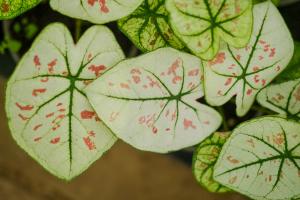When to Start Fertilizing Newly Planted Trees
Planting new trees is an integral part of maintaining a vibrant and healthy landscape. However, taking care of newly planted trees requires a certain level of attention and care. One of the most critical aspects of caring for newly planted trees is fertilization. Fertilization can help to promote healthy growth and development, but it’s essential to know when to start fertilizing newly planted trees.
First Year
The first year is crucial for newly planted trees, as it’s a period of establishment. During this time, the tree is primarily focused on developing its root system, which is essential for its long-term growth and stability. For this reason, it’s generally recommended not to fertilize newly planted trees during the first year.
Instead, it’s best to focus on providing the tree with adequate water and nutrients from the soil. Water the tree regularly, ensuring that the soil stays moist but not waterlogged. You can also consider adding a layer of mulch around the base of the tree, which can help to retain moisture and prevent weed growth.
Second Year
After the first year, the tree’s root system should be well-established. At this point, it’s safe to begin fertilizing your tree. However, it’s important to proceed with caution.
When fertilizing newly planted trees, it’s important to avoid over-fertilizing. Excessive fertilizer can cause the tree to grow too quickly, which may result in weak stems and branches that are prone to breaking. It’s also crucial to choose the right type of fertilizer. Look for a slow-release fertilizer that will provide consistent nutrients over an extended period.
Frequency
The frequency of fertilization for newly planted trees will depend on several factors, including the type of fertilizer, the soil conditions, and the tree species. In general, it’s best to fertilize your tree once or twice a year. Spring and fall are typically the best times to fertilize, as this is when the tree is most active, and it will have the best chance of absorbing the nutrients.
It’s also important to note that over-fertilizing can be just as harmful as under-fertilizing. If you notice signs of growth abnormalities, such as excessive shoot growth, reduced leaf size or discolored leaves, it may be a sign of over-fertilization. In this case, stop fertilizing immediately and wait until the following year to try again.
Conclusion
Fertilizing newly planted trees requires a delicate balance of patience and care. The first year after planting is critical for the tree’s establishment, and as such, it’s best to avoid fertilization during this period. In subsequent years, fertilization can help to promote healthy growth, but it’s essential to proceed with caution and choose the right type of fertilizer. By providing the right nutrients and care, you can help to ensure that your newly planted tree thrives for years to come.

 how many times do yo...
how many times do yo... how many planted tre...
how many planted tre... how many pine trees ...
how many pine trees ... how many pecan trees...
how many pecan trees... how many plants comp...
how many plants comp... how many plants can ...
how many plants can ... how many plants and ...
how many plants and ... how many pepper plan...
how many pepper plan...






























